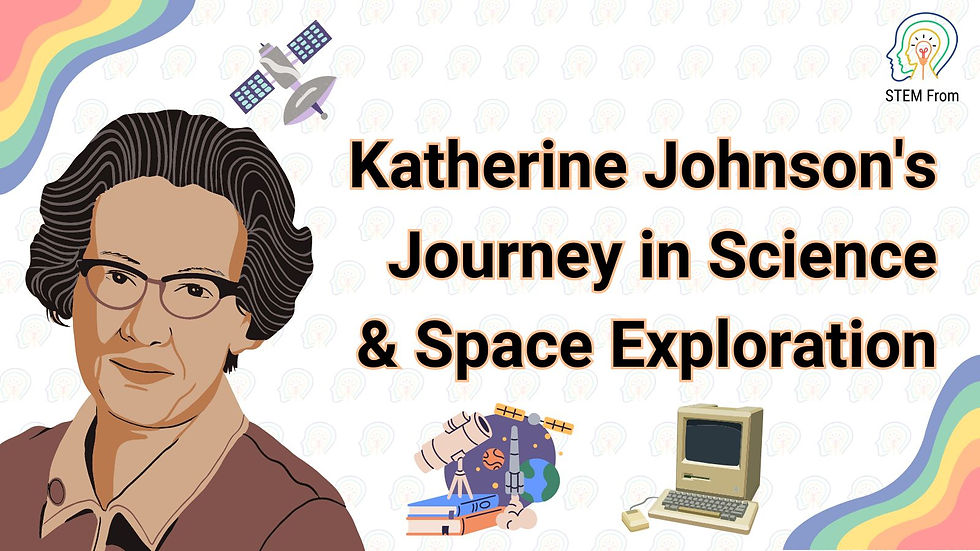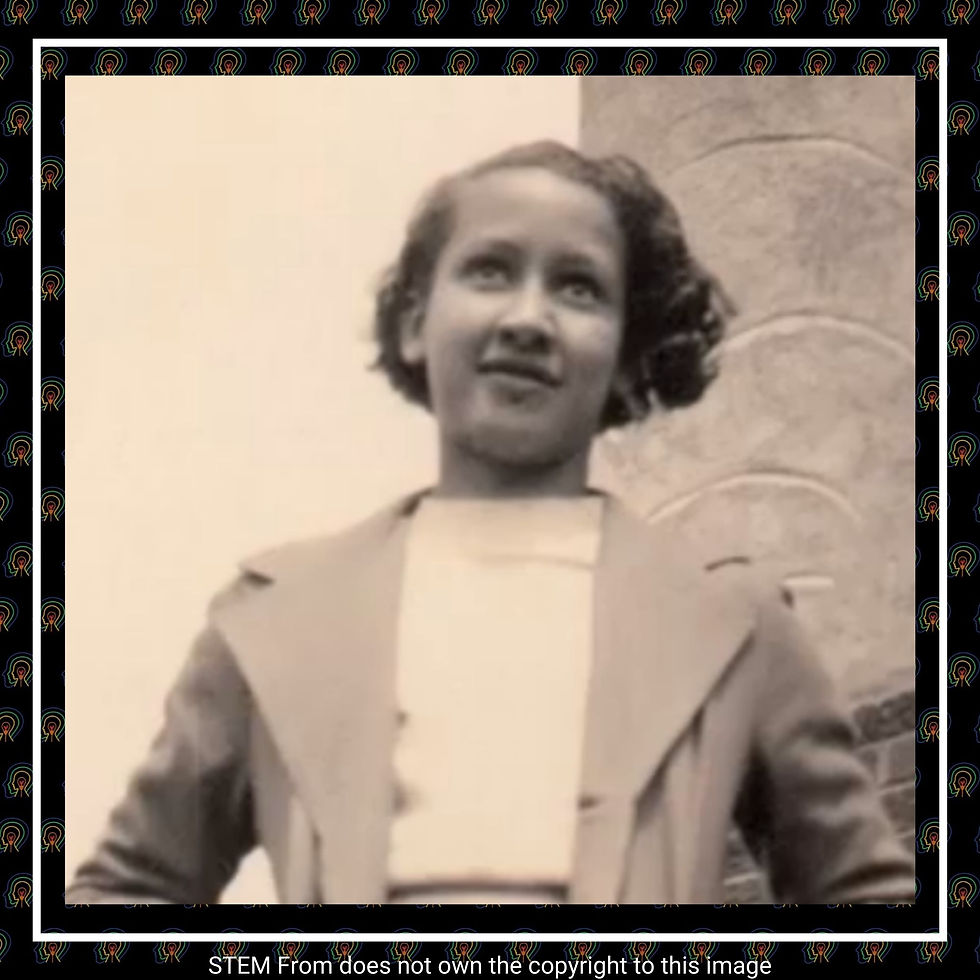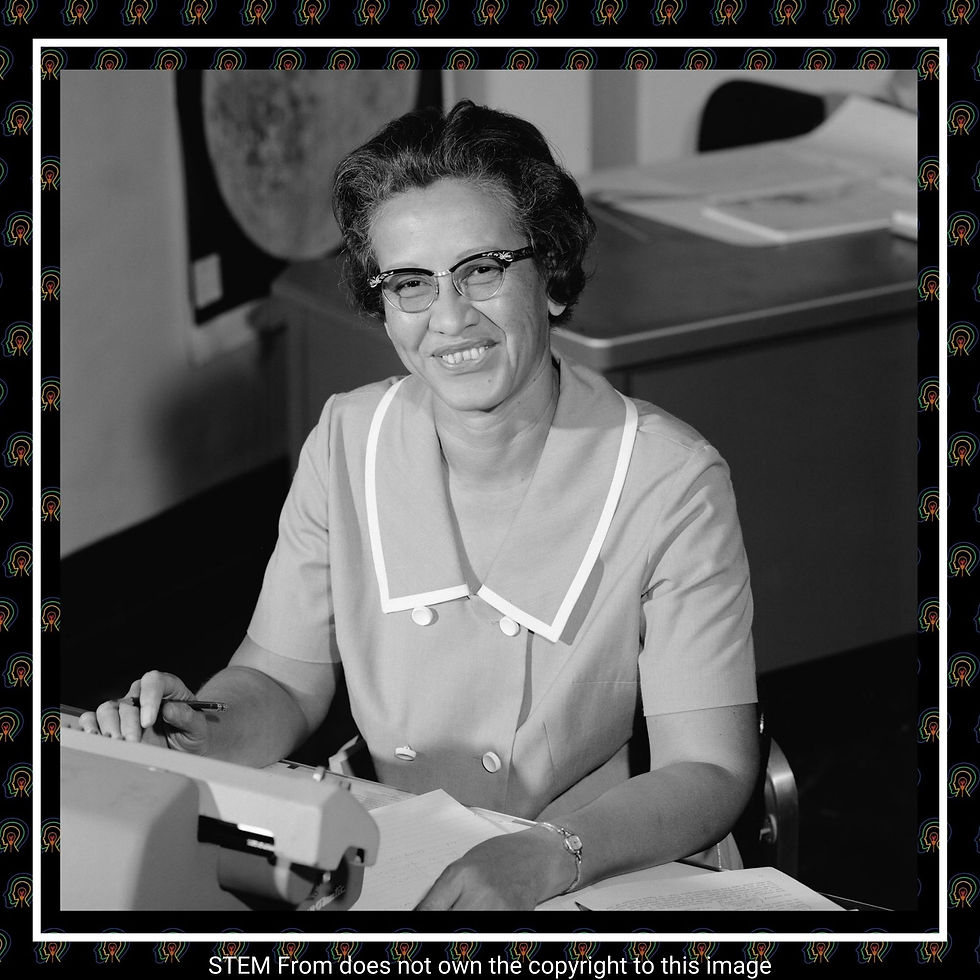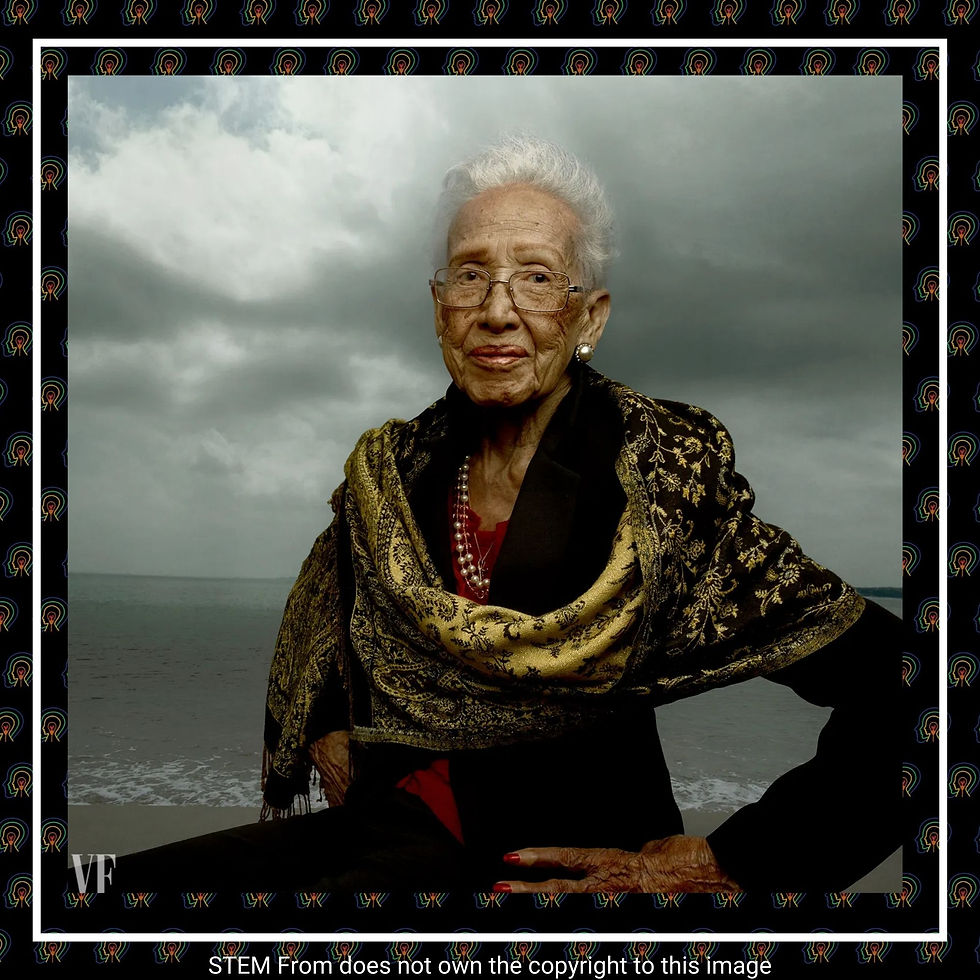Most would know Katherine Johnson as the titular character in the film “Hidden Figures.” Many do not know she was a significant figure in space exploration and aeronautics. Born in a time ridden with rampant racism, she faced a significant set of challenges as a black woman seeking a career in STEM. She would overcome this adversity to become a key player in NASA’s success in the space race against the Soviet Union.

Born on August 26th, 1918 in White Sulphur Springs, West Virginia, Katherine was an academic stand-out from a young age. She bore a deep love for mathematics. Due to her high intelligence, she was enrolled in high school at the age of 10. She graduated at 14 and pursued college thereafter. She earned two bachelor'’s degrees in mathematics and French, graduating with High Honours from West Virginia State College at the age of 18.

She moved to Virginia and went into the educational industry as a math teacher. Shortly after, however, she was selected into West Virginia University’s graduate program—one of three black individuals to ever achieve this in the college’s history (at the time). She studied mathematics under the program for a brief period before settling down in a marriage to James Goble. She yearned to start a family. He passed away in 1956, and three years later Katherine remarried to a man named James “Jim” Johnson. Her dream to begin a family was realized with the steady arrival of her three children.
1953 marked her introduction into NASA, named the National Advisory Committee for Aeronautics (NACA) at the time, where she worked while raising her children. At NACA, Katherine worked in a group of black women named the “West Computers,” who held the responsibility of going over and analyzing test data. Not only that, but their mathematical computations held great importance to success rates of missions.
Despite this, the women suffered under the cruelty of segregation laws, forced to use different bathrooms and dining areas than their white counterparts. Katherine often used the white women's restroom, rebelling in the face of her oppressors. Thankfully, in 1958, when NACA was absorbed into the new NASA, segregation was effectively banned. This did not wane the challenges Katherine Johnson and her peers would face. In her own words,
“it was hard to have somebody else put their door in your face when you’re going for things that you know you’re qualified for.”

No matter how qualified and capable, her and other black women working under NASA constantly faced disrespect and disregard due to discrimination and misogyny. Despite this, Katherine pushed forward. She contributed to an engineer’s paper in 1960 regarding calculations to place a spacecraft into orbit. She was the first woman in her division to do so, and she would go on to co-author or author 26 other research reports throughout her career. She played a significant role in the Mercury program that ran from 1961-1963. She calculated spacecraft Freedom 7’s path in 1961, helping successfully send the first man into space. She made history once more aiding astronaut John Glenn in verifying a computer’s trajectory for Friendship 7, becoming the first spacecraft with an astronaut inside to orbit Earth. She also contributed her talents to the infamous Apollo 11 mission, providing calculations for the team. She would spend her last days at NASA working hard for their space shuttle program before retiring in 1986.

Hard work and consistently-proven intelligence aside, Katherine’s work remained overshadowed by her white male peers for decades. While she received a couple awards, she did not receive major recognition until Hidden Figures: The American Dream and the Untold Story of the Black Women Who Helped Win the Space Race, a nonfiction book about the West Computers, was released by Margot Lee Shetterly. There forward, Katherine’s achievements sky-rocketed to the light, and she found herself receiving a plethora of rewards and eponyms in her honor.
Katherine Johnson passed away on February 24th, 2020 at the age of 101. Her legacy and resilience will forever be a moniker to the black community. She is survived by her three children from her marriage to James Johnson.
Happy Black History Month from us at STEM From! Subscribe to the blog and check out our other articles on pioneers in STEM

Check out our sources:



Comments